A Gift Guide for Social Entrepreneurs


By Caitlin Copple Masingill
When you’re a social entrepreneur, the season of giving can create all the feels. Sure, giving is great, but for many of us in the purpose-driven B Corp movement, the holidays represent cruel confrontations not only with that politically offensive uncle, but also our own internal ambivalence about consumerism.
So how can you celebrate Christmas, Kwanzaa, or Hanukkah without feeling like you’re selling out on the values that drove you to start or work for a socially conscious company in the first place?
That’s where this handy-dandy guide comes in. In a crowded landscape of gift guides aimed at near-sighted unicyclists, gluten-free yogis, single parents on a budget and every demographic in between, this list includes our top picks for impressing the socially conscious entrepreneurs in your life with gifts that serve a higher purpose: transforming business into a force for good.
You’ll see that this guide mostly leaves out apparel and accessories because our friends at Cause Artist’s Social Impact Gift Guide have that covered (and yes, puns are always in season). The one overlap is this set of really amazing headphones by LSTN, where every purchase helps fund hearing aids around the world.
First, the books…
It turns out that changing the world comes with a guide (or two). From Rise Up: How to Build a Socially Conscious Business by our own Russ Stoddard to Frederick Alexander’s handbook on how and why to start a legal public benefit corporation,
Benefit Corporation Law and Governance: Pursuing Profit with Purpose, there’s no shortage of good books for B Corp aficionados. Ryan Honeyman, a partner at LIFT Economy and author of The B Corp Handbook, suggests
Drawdown by Paul Hawken and Raise Capital on your Own Terms by Jenny Kassan.
Marketing maven and social entrepreneur Amanda Larrinaga suggests The Crossroads of Should and Must: Find and Follow Your Passion by Elle Luna as a must-read for your friend who just quit the corporate life to follow their dream of creating a more purposeful career. Her other fave is the Desire Map by Danielle LaPorte, which helps people align their goals to their soul through exercises and affirmations aimed at creating greater inner clarity that can become outer action.
Perfect for Your Officemate
Who doesn’t love popcorn? Americans eat 17 billion pounds of it per year, and even Olivia Pope is not immune to the power of the pop. The Women’s Bean Project is a nonprofit social enterprise that employs chronically homeless women and teaches them how to make nutritious and good-for-the-planet products, including gourmet popcorn in flavors like Vietnamese coconut curry and blue popcorn with salted caramel seasoning.
Oliver Russell client and founder of B1G1, Masami Sato, suggests this line of Giving Gift Cards, greeting cards that make a difference, for people who want to share the gift of giving this year. Created in partnership with a member company, Tracey Keller, these butterfly cards are gorgeous and affordable.
The Party-Goer
Social entrepreneurs, in our experience, thrive when we find our tribe. Each year, Sarah Calhoun, founder of Red Ants Pants, invites 10,000 of her closest friends to her neighbor’s cow pasture in White Sulphur Springs, Mo., to listen to the likes of Emmylou Harris, Taj Mahal, Brandi Carlile, and the late Merle Haggard. Proceeds from the music festival support the brand’s nonprofit foundation that’s dedicated to fostering strength and self-reliance in women and rural, agricultural communities.Ticketing for the July 26-29 festival opens March 31, a bonus if you are currently broke or just a procrastinator.
The Ladyfriend
Show off your style and social conscience with these jewelry recommendations from Payton McGriff, CEO of Style Her Empowered, a nonprofit that helps girls in Togo access education, funded in part by its own product line of tees, hats and totes. Payton is a longtime fan of Purpose Jewelry, a social enterprise that funds International Sanctuary by providing survivors of human trafficking with meaningful employment. There are pieces for any budget and each is handcrafted. All proceeds go to benefiting girls and women escaping human trafficking.
Treat yourself
When you are hell-bent on changing the world, your drive can take a personal or physical toll, often in the form of constantly feeling distracted or illness in the body. Give yourself the gift of slowing down at 1440, a luxury resort and retreat center that brings together luminary faculty members like Cheryl Strayed, Rodney Yee, Elizabeth Gilbert and Alanis Morissette with seekers dedicated to personal and professional growth. I recently attended a Hello Soul retreat held at 1440, and I promise, even if all you do there is eat and sit in the infinity hot pool overlooking thousand year-old trees, it will totally be worth it.
Another indulgence that’s closer to home than a weekend at 1440 is a set of Boll & Branch sheets. Invite luxury into your home with a set of sheets that are 100% organic, fair trade and crafted by a certified B Corporation. You’ll feel good about dropping $200-plus on sheets because the company gives a portion back to fight human trafficking.
What are we missing? We’d love to hear your ideas for giving with a social impact.
Caitlin Copple Masingill is the public relations director at Oliver Russell, a certified B Corporation that builds brands for purpose-driven companies and organizations. She writes from Boise, and when she’s lucky, Montana.
Image credit: Oliver Russell
Coca-Cola, Walmart Join Oxford in Boosting Women’s Equality Worldwide
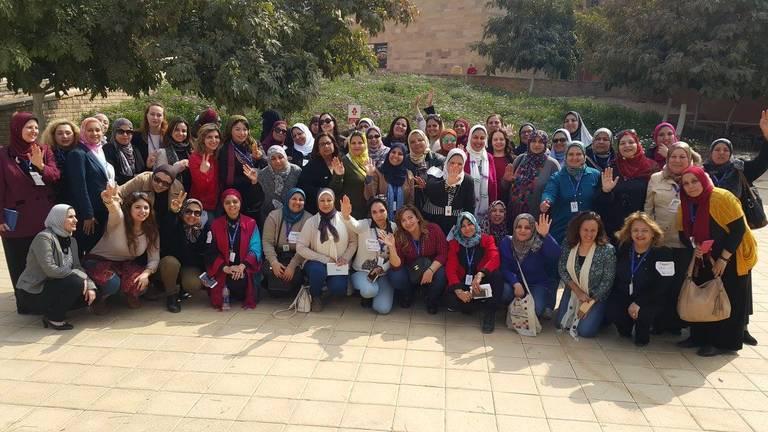

The past couple months have been a long, extended and tortuous watershed moment for women’s equality - culminating in Time’s decision to acknowledge the #MeToo social media movement and recognize “The Silence Breakers” as Person of the Year.
But while many women are increasingly speaking out, others are still in the shadows. True, the world may be nudging closer to the time when women can truly feel equal in the workplace. Yet worldwide, only 50 percent the world’s women are part of the workforce – or at least, that is the ratio of women whose economic contributions are recognized. Contrast that figure with the world’s men, three-fourths of whom work and are integrated into their local economies. Furthermore, depending on the source cited, women earn anywhere from 60 to 75 cents for each dollar a man earns.
So how can women’s financial clout ever catch up with that of men?
That is the question Oxford University’s Global Business Coalition for Women's Economic Empowerment (GBC4WEE) initiative, which launched last week, is trying to answer. Joining Oxford on this quest to improve the economic inclusion of women are companies such as Coca-Cola and Walmart.
"The whole agenda would move more quickly if these players were sharing with each other what they were learning," Oxford University's Linda Scott, widely recognized as a global thought leader on women entrepreneurs, explained to the Thomson Reuters Foundation in a recent interview.
Scott cited a wide body of research indicating that as more women work, economic growth expands. In turn, women are inclined to spend more of their earned money on education and other investments that can help reverse poverty.
Additional companies participating in the GBC4WEE program include ExxonMobil, Marks & Spencer, Mastercard, Mondelēz International, PwC, Qualcomm and Goldman Sachs.
The 10,000 Women initiative Goldman Sachs has managed for a decade offers one example of how the global business community can encourage more women to pursue their career and economic goals. The program offers women entrepreneurs business management education, mentoring and access to finance. Working with approximately 100 academic and nonprofit partners, the program’s managers say it has reached over 10,000 women across 56 nations.
Going beyond those numbers, the 10,000 Women program has also generated a long-term, “pay it forward” impact. At least 90 percent of the women who have completed this Goldman Sachs initiative have mentored other women in their local communities; 58 percent of the women have created new jobs at an average clip of 3.5 employees; and 69 percent of the program’s alumni have reported a boost in earned revenues.
Scott is seeking more programs that can similarly lift economic prospects for more women. “Realistically, the only way that women’s economic empowerment can be sustained is if it is hardwired into the world system, primarily via the private sector,” she wrote in a blog post last month.
Image credit: Goldman Sachs/Facebook
Why Reusing Materials Can Help Save the Planet
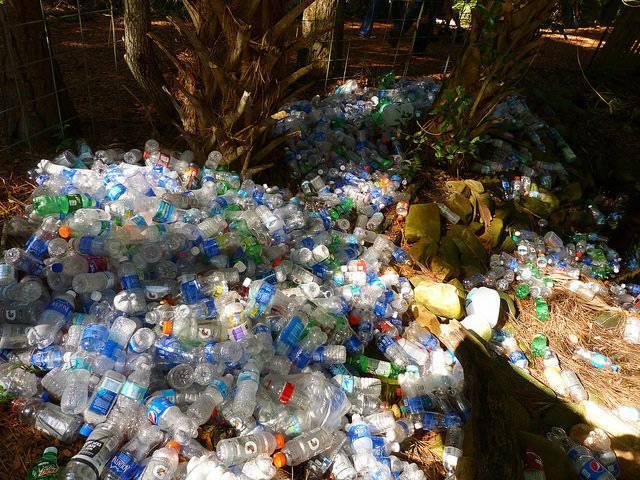

By Erin Simon
The holidays are here and with them comes a scene we know all too well. Picture it – you’re filled with spirit as you sift through the back of a closet to unpack old decoration and adorn your house. You grab a strand of lights, ready to make your front windows glimmer, plug them in, and nothing happens. What’s the problem? One single light in the strand is broken, and now the whole thing has failed.
This is the flaw in our global materials management system.
When we harvest natural resources and turn them into our everyday products, we put pressure on our environment. When we use these products and materials only once before throwing them away, we waste our natural resources. We could reuse far more of what we extract from the Earth, but there needs to be a market, verification measures, and willingness from all actors – from the companies that manufacture the products to local governments who manage waste systems – in order to do so. Like a string of lights, every part needs to work together for the entire system to succeed, but we don’t yet have every component of the value chain on board.
Take one recent example in the United States – a hospital invested in a system to collect clean, high-quality plastic from their operations. These plastics were uncontaminated materials with high value and potential to be used again in a new product. The hospital wanted to get these materials to buyers who could reuse them, but had no means of doing so without a service in place to help. Even in the United States, with a strong infrastructure system around material recovery, our materials management system isn’t living up to its potential.
The issue around our materials management is urgent, and the time to act is now. We are losing forests and grasslands as we collect materials, we are contaminating our oceans as we toss away unnecessarily wasted items, and we are polluting our air as we exert more energy and expel carbon emissions pulling additional resources from the Earth instead of recovering materials that could have been used again.
It doesn’t have to be this way. If we join together industry, NGOs and local governments, we can create a collaborative system that extends the life of our natural resources. But we all must work together. We need to leverage all our strengths to have a meaningful impact.
Creating cascading value in materials so they can be reinvented and reused is not a simple process. It all needs to start by getting the materials back from those who used them in the first place – for that you need a collection program in place to which people have easy access. Materials then have to be aggregated and processed into useful components. Once the materials have been repurposed there needs to be someone willing to buy it and use it in a new product. All along this chain the participants have to be able to find each other, talk to each other and consistently meet quality and safety standards.
A lot could go wrong along this process – the price of the materials might drop, and then one of the companies along the chain might not be able to operate. Or collection programs might not be communicated well to the public, so the quality of collected material suffers. That’s why it is critical to take a holistic view and involve a wide range of stakeholders. That is the goal of the Cascading Materials Vision.
The Cascading Materials Vision is a platform that seeks to enable broader collaboration on materials management, creating shared value through materials recovery. To do it, the Cascading Materials Vision has convened industry and other stakeholders that will help companies source repurposed materials that protect their profits, the environment and the future wealth of our natural resources.
It’s not just about recovering as many materials as we can; it’s about protecting ourselves and our planet. If we think differently, we can do more with less. And if we are committed to doing it together, we will keep our natural resources glowing brightly for future generations.
Erin Simon is the Director of Sustainability R&D at World Wildlife Fund.
Rick Perry Signs a Carbon Capture Agreement with Saudi Arabia


The future of carbon capture and storage in the U.S. – as well as the fate of the U.S. coal industry – may be a bleak one, due to the tax reform bill poised to pass Congress. But while coal company executives are fuming over a tax plan that one CEO says “wipes us out,” the U.S. energy secretary is moving forward on the technology with Saudi Arabia.
This week, Department of Energy Secretary Rick Perry met with his Saudi Arabian counterpart to discuss “means to enhance the relations” between the two countries when it comes to the energy sector. Included in the talks were plans to develop a framework on cooperating on clean energy (defined as “clean fossil fuels”) and carbon management. The result was the signing of a memorandum of understanding (MOU) on Monday that seeks to advance “research and collaboration.”
The carbon management discussion between the U.S. and Saudi Arabia included carbon capture and storage (CCS). Advocates of the technology have long said CCS provides the means for countries to harvest their fossil fuel reserves, while minimizing any environmental impact by sequestering those emissions underground in places such as abandoned oil wells or mining operations. Such programs have been launched in nations such as Canada, Norway and the U.S. A project led by Abu Dhabi’s Masdar initiative uses captured carbon to enhance oil and natural gas recovery.
Critics of this technology say it only prolongs dependence on fossil fuels, and is far too expensive to be feasible.
For the Department of Energy, the optics of pulling the plug on carbon capture projects here at home, while promoting projects in a region on which the U.S. was long dependent for energy imports until this decade, is puzzling at best. Yet judging by the tone of the meeting, this summit between the two countries’ energy chiefs was more about cementing ties between the two allies than any advancement of next-generation energy technologies.
“After a productive and informative visit to the Kingdom, today the United States and our friend Saudi Arabia enter an exciting new phase in our energy partnership, building on our collective success with an eye to the future,” said Secretary Perry in a public statement. “This MOU outlines a future alliance not only in supercritical carbon dioxide, but also in a range of clean fossil fuels and carbon management opportunities. Together through the development of clean energy technologies our two countries can lead the world in promoting economic growth and energy production in an environmentally responsible way.”
Cutting to the chase, it is important to remember that this agreement is only an MOU – no official partnership has been launched yet. MOUs are often a convenient way for government agencies and private companies to hold a press event and give off the impression that something has been accomplished. The Saudi-U.S. MOU, for example, was drafted in part to “encourage” the organization of seminars and workshops as well as visits by each nation’s experts to various facilities including research laboratories, institutes, and industrial sites. That does not mean, however, that these visits or any such knowledge transfers will actually occur.
Nevertheless, the idea of promoting any fossil fuel technologies in the Middle East, while implementing a tax bill that would launch a “hard hit” toward the coal industry in the U.S., will prove to be tough for the White House to defend – especially if employment opportunities in the coal industry continue to be stagnant, or even decline, so soon after the sector was ebullient after Donald Trump’s election last year.
Image credit: Kris Krug/Flickr
Houston Flood Prevention Plan: High-Priced Golf Courses
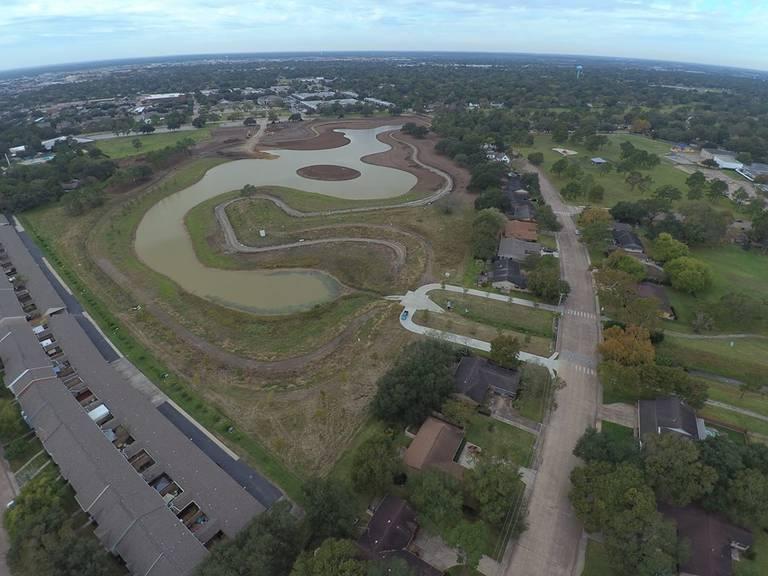

In the aftermath of Tropical Storm Harvey, the city of Houston is finding new ways to use its golf courses and save whole communities. And as is so often, it comes with some "small" sacrifices.
Most of Houston's golf courses were inundated with flooding during the storm, which isn't a surprise since most courses are fairly flat and aren't built to accommodate historic rainstorms.
But as the Clear Lake City Water Authority in Houston's southeast side discovered, they can be designed to hold in water. In fact, with a little ingenuity, they're great as mini-reservoirs that deter flooding in other parts of the surrounding community.
The project is the result of a combined effort of the CLCWA and the Exploration Green Conservancy to protect the city's homes from accumulating rainwater. When the owner of the defunct Clear Lake Golf Course announced plans to pave over the course for commercial development, the city interceded, worried that it would create more flooding. The CLCWA says it already had indications that the golf course was the catchment area for standing water during storms and was working on ways to prevent more widespread flooding.
But efforts to convince the owner to sell the property to the CLCWA failed. After several attempts to come to a compromise, the community eventually filed to condemn the property and bought it for $6.1 million.
In 2015, the CLCWA went to work on a multi-stage plan to develop a capture reservoir that would have five separate ponds. The engineers had almost completed Stage 1 when Tropical Storm Harvey barreled into Houston last summer.
The experiment worked. The first pond was only partially complete; still, it managed to keep 100 million gallons of water from flooding homes and streets. Harvey was just the test scenario that the engineers needed to determine whether their new catchments would hold back flooding.
But turning golf courses into giant holes isn't really what the project is about. It's about using nature to improve a community's resiliency. The project includes redeveloping the 200-square-acre plot to include walking trails, trees and other features that will be available to the community year-round.
“We don’t want it to just be a hole in the ground, we want it to be something nice. Unless there’s a hard rain, the public can use it every day for something other than flood control” CLCWA President John Branch told the Texas Tribune in an interview last month.
And that kind of thinking -- the idea that communities need green spaces that can help combat environmental risks is growing.
In February the Houston city council approved a plan to redevelop the defunct Inwood golf course into a multi-use green space that would house basins for about 370 million gallons of stormwater. The detention ponds would help reduce flooding from the White Oak Bayou, an area that sustained widespread flooding during the Harvey rains this summer.
Both golf courses pose unique advantages to nearby communities: They are positioned right next to, or within the growing communities, so the catchment ponds are able to act as runoff areas for water that would otherwise inundate storm drains and streets. And, as in the case of the Exploration Green site, planners are able to selectively introduce plants that help with retention and absorb city carbon emissions.
As to golfing in Houston: There are still plenty of golf courses to go around. Houston has an estimated 150 courses spread about its flat landscape, and are still a major attraction for the city's tourism and residential home industries.
Still, if there's any positive takeaway from the city's increasing vulnerability to flooding, it's the realization that there's environmentally positive ways to use open spaces that both benefit the community and protect land values. Cities in environmentally at-risk areas are also looking at the prospect of buying flooded homes and developing those properties into retention ponds. Cost and at times, neighborhood push-back are the two biggest obstacles that cities face when trying to stave off that next 100- or 500-year-flood.
Photographic images of Exploration Green: Courtesy of Clear Lake City Water Authority and Exploration Green; Drawings courtesy of CLCWA and SWA Architects
Patagonia: ‘The President Stole Your Land’


As of press time, that message was posted in stark block letters on Patagonia’s home page.
Patagonia's reaction was rapid in the aftermath of Monday evening’s White House announcement that the Trump Administration seeks to shrink the size of Bears Ears National Monument in Utah by as much as 90 percent. In total, five national monuments will see their size reduced, for a total rollback of 1.2 million acres that previously were under the federal government’s protection.
In the proclamation announcing the redrawn boundaries of Bears Ears, President Trump claimed that the move was necessary due to “the lack of a threat of damage or destruction to many of those objects.”
The decision to rescind federal protection for five national monuments was made despite a months-long public relations campaign launched by various public lands preservation supporters. REI's former CEO and Interior Secretary Sally Jewell was among many who gave an impassioned plea to maintain all of Bears Ears’ lands as a national monument:
“In the past century, tribal leaders have witnessed looting of grave sites, irreparable harm to petroglyphs by vandalism, sacred places torn up by indiscriminate off-road-vehicle use, and damage to a unique, intact landscape. I have seen these impacts myself – and as an American, I am ashamed we have let this happen.”
Nevertheless, Patagonia is one organization that will not let this reversal move forward without a fight. The outdoor clothing and gear manufacturer said it will join forces with environmental organizations, Native American groups and other businesses to keep those lands protected.
According to AdAge, Patagonia plans on suing the Trump Administration, joining forces with groups including Friends of Cedar Mesa, the Native American group Utah Dine Bikeyah and Archaeology Southwest. Their action will reportedly follow in the footsteps of the Inter Tribal Coalition, which filed its own lawsuit on Monday evening in a District of Columbia federal court.
Patagonia has also launched an online petition to encourage the general public to express their views about the fate of Bears Ears.
The outdoor retailer has been opposing the Trump administration’s public lands policies since the transfer of power from Barack Obama’s presidency in January. In protesting Utah politicians’ alignment with the Trump White House, the company withdrew from a lucrative outdoor clothing trade show that was an regular event in Salt Lake City for over 20 years. Other companies followed suit, and the event will be held in Denver starting next year. This summer, Patagonia launched a TV advertising buy for the first time ever in an effort to rally public support for public lands protection.
Patagonia’s argument for preserving public lands is as much an economic argument as it is an environmental and moral one. The company cites statistics estimating that the outdoor recreation industry employs 7.6 million jobs and generates $887 million in economic activity – outpacing the jobs and spending generated by the U.S. fossil fuels sector.
Image credit: Bureau of Land Management/Flickr
How Trump Could Revive The Cape Wind Offshore Wind Energy Project
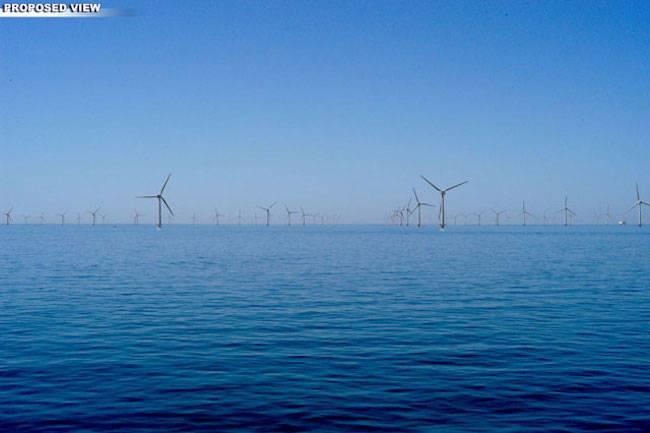

Offshore wind energy has been slow to take off in the U.S., and the notorious Cape Wind project is a case in point. After a 16-year slog through the courts, the project's developer, Cape Wind Associates, appears to have given up on its ambitious plans for a 130-turbine wind farm in Nantucket Sound off the coast of Cape Cod in Massachusetts.
That doesn't necessarily mean a respite for William Koch (one of the two "other" Koch brothers). Along with members of the Kennedy family, Koch has been a high profile organizer against the Cape Wind project. The federal lease for the wind farm is still in force, and the Bureau of Ocean Energy (BOEM) has in effect smoothed the way for other ocean energy projects to take Cape Wind's place.
No more Cape Wind for Cape Cod...
One measure of the effectiveness of the Koch/Kennedy lobbying campaign is the passage of a new state "energy diversity" law in 2016. The new law requires Massachusetts utilities to purchase 1600 megawatts in offshore wind energy capacity, which should be good news for Cape Wind.
However, a carve-out was written into the law. Only wind farms located more than 10 miles off the coast of inhabited areas are eligible to bid on contracts to fulfill the 1600 megawatt goal. An additional requirement is that eligible wind farms must have acquired their federal leases through a competitive process after 2012.
As a pioneering offshore wind project, Cape Wind does not meet either of those requirements. It was the first offshore wind development in the U.S. to acquire a commercial federal lease but that occurred in 2010, before BOEM established a competitive bidding process for offshore wind all along the Atlantic coast.
In addition, Cape Wind's leased area is located within the 10 mile limit.
...but a wind energy phoenix could rise from the ashes...
One interesting twist is that Cape Wind's federal lease is in force until 2041. Although recent news reports indicate that the company is preparing to ask BOEM to rescind its lease, another possibility is that Cape Wind could transfer its rights to another developer.
If a transfer is not legally permissible, BOEM could open up the area to a new round of competitive bidding. That's a long shot considering that the winning bid will face renewed blowback from the Koch lobbying effort, but it could be a risk worth taking.
The 2016 state law simply sets a 1600 megawatt goal for offshore wind capacity. It does not appear to provide for sourcing restrictions once that goal is met. Massachusetts utilities may have trouble meeting the 1600 megawatt goal within the next year or so, but a slew of wind farms are in the pipeline all along the wind rich Atlantic coastline.
Meanwhile, offshore wind costs are dropping globally as the technology improves. The increased offshore development activity also enables economies of scale to kick in throughout the supply chain.
That's all to the benefit of the next company to develop the Cape Wind site. In addition, the site's relatively close shoreline location could provide it with additional cost advantages over leased areas beyond the 10-mile limit.
...maybe!
Last Friday the Cape Cod Times reported what seems to be the definitive word from Cape Wind:
“Cape Wind has confirmed to the Bureau of Ocean Energy Management that it has ceased development of its proposed offshore wind farm project in Nantucket Sound and has filed to terminate its offshore wind development lease that was issued in 2010,” according to a statement sent to the Times by Cape Wind vice president Dennis Duffy.
That's quite a turnaround from just a few months ago. According to BOEM's website, last June Cape Wind Associates wrote to the agency requesting a two-year suspension of its lease.
For that matter, barely two months ago, on September 26, BOEM formally affirmed its support for the offshore wind project.
Late last month the Koch-backed organization Alliance to Save Nantucket Sound filed an appeal of the BOEM decision, and that may have convinced Cape Wind to throw in the towel.
The appeal asks for the environmental review process to start from scratch due to a "the myriad of developments since the EIS was first issued in 2009."
Although it's not quite what the Alliance had in mind, among those developments is an emerging generation of high efficiency, low cost offshore wind turbines, new methods for anchoring turbine platforms, and new devices that can harvest wave energy without spoiling the view from shore. Any or all of these factors could combine to attract another developer to the Cape Wind site.
President Trump is known for opposing wind energy in general and offshore wind energy in particular, but under his watch the U.S. Department of Energy has continued to press forward with programs promoting U.S. wind development.
Anything could happen, so stay tuned.
Image: Simulation of one-mile view of Cape Wind turbines from boat via Cape Wind Associates.
Paperless Offices: A Look at Successes and Challenges


By Anna Johansson
The concept of a paperless office isn’t a new one; the term started circulating in the early 1980s. But even today, more than 30 years later, companies are finding it hard to transition to a model that allows them to function completely without paper. Despite our thriving digital environments, which include online communications, unlimited information, and now, cloud storage, there are significant obstacles to adopting total “paperlessness.”
Here is a look at three companies that have already done it.
Decos
Decos is a paperless company founded in the Netherlands. Its efforts are currently saving about 16 trees’ worth of paper every year, but employees found it difficult to transition right away. They started by getting rid of trash cans, which made it harder to get rid of paper, and therefore made paper less disposable. Then, it made printing more difficult—rather than abolishing it altogether—by relocating the printer to an almost-inaccessible area. When the printer wasn’t convenient, employees relied on it less, and eventually, people adapted to a purely digital environment. The company also enforces a “no notebooks” policy, and even goes as far as to return mail to the people who send it.
Idea Rebel
Idea Rebel is a digital agency that started in Vancouver back in 2008. From the beginning, the company was committed to minimizing paper waste—to the point that its founder, Jamie Garratt, didn’t even buy a printer. Going further, the company banned all notepads and paper for note taking, or creative sketches, and started banning paper cups from fast food restaurants and coffee shops. The company permits designers to bring their own notebooks from home, but they have to take them back at the end of each day, making it more difficult to use paper on a regular basis. Everything else is done on computers or whiteboards—even signatures for important documents. If a company refuses to sign digitally, Idea Rebel refuses to do business with them.
The Austin Company
The Austin Company is an international firm based in the United States that handles architectural, engineering, design-and-build, and construction management services. With more than 135 years of experience, they’d gotten used to traditional, paper-based inspections as a core part of their business, but they found that the paperwork slowed down most of their operations, and resulted in significant clutter. Plus, with inspections lasting longer, human errors increased, and mailed forms extended project lengths by days. After the company went paperless (running all inspections on smartphones or tablets), inspections were cut down to a speedy 15 minutes, and the company estimates it’s saving as much as $250,000 annually (including $90,000 in saved productivity costs).
Key Challenges
These companies prove that it’s possible to go entirely—or almost entirely—paperless, but there are some key challenges you have to overcome first:
- Eliminate options for employees. If it’s easy for your employees to use paper, or even possible, they’re going to use it. Subtle things like conveniently available printers and trash cans can influence higher levels of paper use, so try to eliminate those options as much as possible.
- Sacrifice some business. Paper isn’t just used for internal communications; it’s used by and for other businesses as well. Going paperless has the potential to interrupt those external communications. For example, if one of your clients is used to communicating via paper—such as sending paper purchase orders—you may be forced to either sacrifice their business or come up with a compromise.
- Recognize peripheral paper uses. Paper has many uses throughout the office—not just printing flyers, information to file, or taking notes. Peripheral uses of paper, such as in disposable cups or in toilet paper, are especially difficult to identify and eliminate.
If committed to the task, your company can become even more sustainable by going paperless (or nearly paperless). It won’t be easy at first, but you’ll have a stronger business model, and will likely save money along the way.
Anna Johansson is a freelance writer. You can follow her on Twitter @Number1AnnaJo.
Trump Disbands Federal Climate Resilience Panel


A panel that was created by the U.S. Commerce Dept. under former President Obama to help increase climate resilience in cities has been dissolved by the Trump administration. The Community Resilience Panel for Buildings and Infrastructure Systems, which was initiated following the infrastructure damage from Hurricane Sandy in 2015, announced its final meeting on Monday.
The Community Resilience Panel's job was to explore ways that communities could address climate impacts. Its membership included six federal agencies, including the Environmental Protection Agency, National Oceanic and Atmospheric Administration, Department of Housing and Urban Development’s (HUD) Office of Economic Resilience and National Institute of Standards and Technology (NIST), which oversaw the panel's operations. Over the past two years it had developed a broad range of expertise that allowed it to channel into committees focusing on buildings and facilities, water and wastewater, energy and other areas relating to community and infrastructure resilience.
But it wasn't solely attended by federal representatives. In April, the National Academies of Sciences, Engineering, and Medicine became the first non-federal sponsor, opening the door wider to recognition by the private sector. The Academies' participation signaled a growing recognition of the potential for public-private discussion on climate impact mitigation. Its own work on climate resilience resulted in the founding of the Resilient America Roundtable and a pilot program that it started in 2014, that works directly with communities impacted by climate change.
In addition, the U.S. Army Corps of Engineers, which is studying ways that it can "provide greater support to community resilience locally and through national policies" had announced it had planned to participate.
One of the panel's projects this year was a targeted comparison of public and private approaches to measuring resilience in communities. The project was an attempt to bring together broad knowledge in how climate impacts could be addressed, and the methods that have been developed in areas at the forefront of climate impacts, such communities in the Gulf of Mexico.
It was also studying efforts by private organizations like the Zurich Foundation, Rockefeller 100 Resilient Cities and the Nature Conservancy to measure climate impacts to "[identify] common challenges or research needs related to measuring resilience [and discuss] applications for these or other approaches at the community level."
According to NIST, the decision to disband the panel was made internally. NIST said it "conducted an assessment of the Panel and its mission and determined that, while the Panel has made progress on achieving its first goal of promoting collaboration among stakeholders, the second goal of considering standards and best practices has been much more challenging. NIST has therefore decided to transition to a national workshop as a more effective and efficient way to convene stakeholders and advance community resilience."
The agency said it plans to launch the anticipated workshop in the fall 2018 and that it will be continuing the panel's mission to identify and determine best-case methods for addressing climate impacts.
It did not state why it would take a year to initiate a workshop on issues that the United Nations Department of Economic and Social Affairs Statistics Division has stated requires "urgent action."
Flickr image: Alec Perkins
The Economist’s Food Sustainability Index Has a Huge Surprise
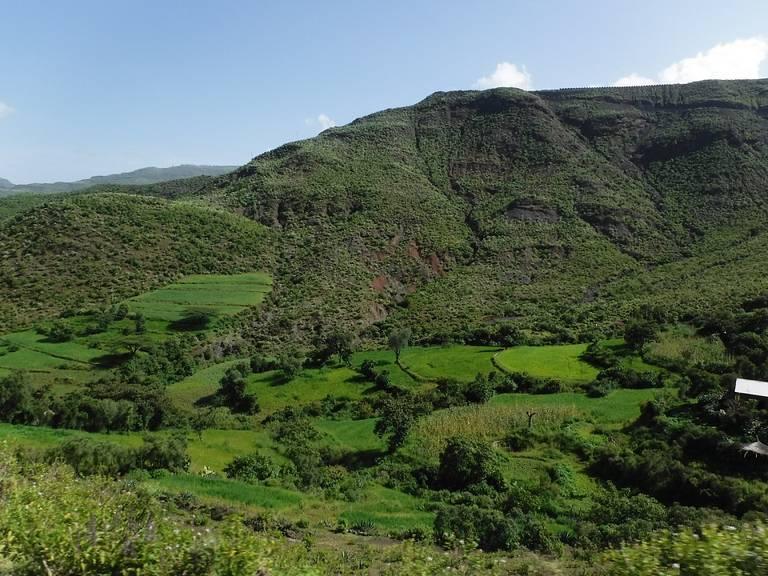

This week, the Economist Intelligence Unit (EIU), a division of The Economist magazine, released its most recent assessment of food sustainability in 34 countries.
Issued for the first time last year, the EIU's Food Sustainability Index (FSI) looks at eight various categories bundled into three pillars: sustainable agriculture, nutritional challenges and food waste.
The highest-ranking country when it comes to sustainable food is France; that designation is not much of a surprise considering the country’s longstanding embrace of small farmers. The country also scores high when it comes to food waste policy. Last year, France’s government banned food waste and in turn, major supermarket chains started to sell “ugly” fruits and vegetables – a trend that soon filtered across the channel to the United Kingdom and across the pond to major U.S. chains.
The survey's real story, however, is that Ethiopia, the poorest country FSI researchers evaluated, came out as twelfth in the report. In fact, the eastern African country is perched higher than the U.S., U.K. and far above the wealthiest nation in the index, the United Arab Emirates (which ranked last). Glimpses into Ethiopia's farming revolution could give other lower-income countries clues on how to strengthen their domestic food supplies. In addition, companies and NGOs can find inspiration on how best to share resources and ideas about sustainable agriculture across their global supply chains.
So how did landlocked Ethiopia, one of the world’s poorest countries, score so well in this survey? After all, the FSI report found a correlation between rapid urbanization and food insecurity, and Ethiopia is enduring a rapid rate of citizens moving from the countryside to its cities. The FSI also found that wealthier nations naturally tend to fare better on the food security front. On the flip side, Ethiopia scored relatively well when it came to the FSI’s “nutritional challenges” metrics. For example, Ethiopians spend about the same time doing physical activity as they do watching TV or staring at their devices - as opposed to most individuals who spend more time sedentary than moving about.
And over the years, the adversity Ethiopians have confronted time and again has actually engendered the spread of sustainable agriculture practices. Some global companies have contributed to the effort, such as PepsiCo’s plan several years ago to boost production of chickpeas, the main ingredient in hummus.
Many improvements in farming practices, however, have occurred at the local level across Ethiopia. Most farms in the country are family-owned, with a size of five acres or less. As a Guardian report showcased a year ago, threats such as droughts and environmental degradation have nudged local officials and farmers to adopt tactics ranging from agro-forestry to the teaching of better soil management. Projects such as the Ethiopian Sustainable Food Project aim to not only teach ideas on how to raise new crops, but how to store them and help move smallholders beyond subsidence farming.
TechnoServe, a U.S.-based social enterprise, runs projects such as a program that teaches coffee farmers to rotate their plantings with other crops such as maize. 2Scale, a project funded by the Netherlands, also identifies crops that are suitable for crop rotation across this country of 102.4 million people. Each of these individual programs may appear small in impact at a first glance, but collectively they have helped bolster food security while poverty across the country has fallen this decade.
Such improvements in part have led to the Ethiopian government’s decision two years ago to increase exports of teff, the nutrient-rich grain that is the base of the country’s famous injera spongy flatbread. When 3p visited Ethiopia in 2015, locals repeatedly explained that exports of the grain were banned over food security fears. While hunger has not been eradicated in this country with a per capita income of $660, better farming techniques have convinced the government that some exports of teff could benefit some farmers without putting more people at risk of food insecurity.
The country’s goal to become a middle-income country and have a “green economy” by 2025 may not seem outlandish after all. Ethiopia has become a thriving laboratory full of projects sponsored by many organizations such as the World Bank, which has chosen to focus on soil management.
“Over 80 percent of Ethiopia’s labor force is engaged in the agriculture sector,” said the World Bank’s Andrew Goodland in a report the agency released last year. “By providing millions of farmers with the opportunity to make more climate-smart farming decisions, the project’s contribution to the Ethiopian government’s goal of becoming a green economy by 2025 could be significant.”
Image credit: Leon Kaye